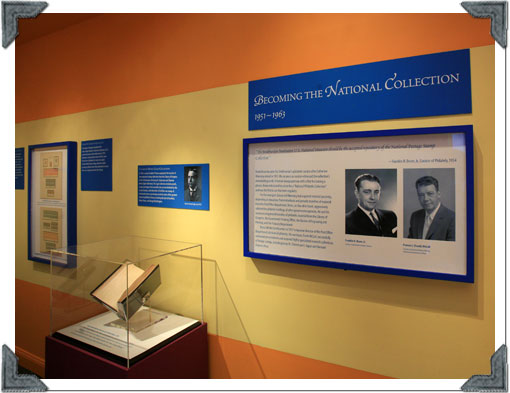
Visible in this photograph are selections from the famous Clarence H. Eagle and Ernest R. Ackerman collections of U.S. proofs and essays, both of which were transferred to the Smithsonian's philatelic collection by the Library of Congress in the 1950s.
125 Years of the National Philatelic Collection







